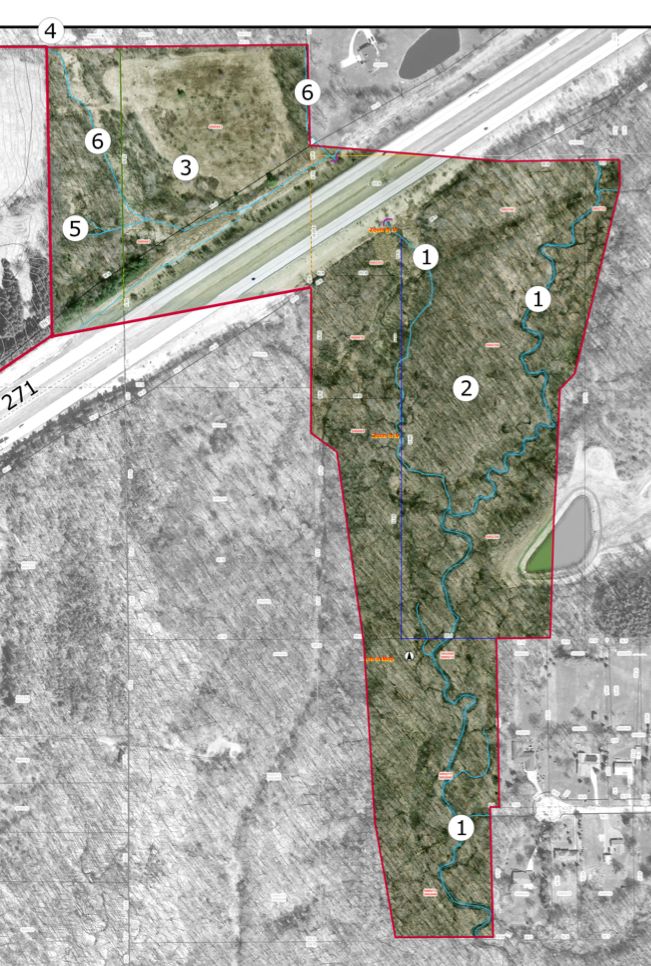FRY FARM IN RICHFIELD, OHIO
HABITAT 4
MARSH
Marsh in Mid-April |
Marsh in Late July |
A marsh is a permanent wetland with relative stability. A number of amphibians can be found in marshes, especially during the breeding season. 1) The marsh on the Fry Farm is dominated by emergent plants, including grasses and woody plants, and includes cattail and skunk cabbage on the margins. The amphibian population in the marsh of Fry Farm has not been cataloged, by similar marshes in nearby areas include Northern Leopard Frogs, Green Frogs, American Toads and Peepers. 2) The marsh is fed by the two springs and a separate headwater stream. These streams make up the West Branch of the Upper North Fork of Yellow Creek. The head of the separate headwater stream that flows into the marsh is protected by a retention dam created when Rainbow Acres Subdivion was built and is located on land of that subdivision. The marsh is the northern part of a larger marsh that was bisected by Interstate 271. |
1. North Fork of Yellow Creek 2. Medina Summit Conservation District 3. Marsh and streams on Fry Farm 4. Storm Water Retention Dam 5. Springs 6. West and Middle Branch of North Fork of Yellow Creek
|
The marsh on the Fry Farm is connected to the southern portion of the marsh by a 72 inch pipe under I-271. That southern portion is now protected in the Medina Summit Conservation District. See map to the left (area below I-271). The two marshes form a single ecological system. They also offer two important mechnisms to help reduce downstream flooding on Yellow Creek: the retention dam and the marsh itself. For habitat, species protection and flood control, the marsh and streams on Fry Farms require continuing protection and the wooded area between the two streams should undergo recovery by removing invasive species such as Autumn Olive and Multi-Flora Rose and replacing them with Tulip, Maple and Oak trees (see forest habitat herein). |
1. "Amphibians of Ohio," Ohio Biological Survey, Inc. (2013) p. 41, 43. |
2. See, e.g., Gott Fen Nature Preserve in Portage County, "Amphibians of Ohio," p. 43. |
|
